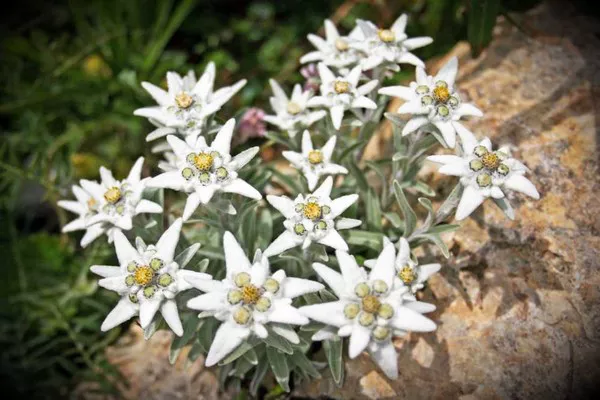In the intricate tapestry of nature, flowers have always held a special place, symbolizing beauty, emotions, and the essence of life. Each month is associated with a particular bloom, carrying its unique symbolism and charm. March, a month that marks the transition from winter to spring, boasts its birth flower, a botanical gem that embodies the spirit of this season of renewal.
The Daffodil – A March Delight
As March unfolds and the world awakens from winter’s slumber, the daffodil takes center stage as the birth flower of the month. The daffodil, a member of the Narcissus family, is celebrated for its vibrant hues and trumpet-shaped petals that herald the arrival of spring. This cheerful flower has long been associated with various myths and legends, captivating hearts with its radiant beauty. In many cultures, the daffodil is considered a symbol of renewal, hope, and the promise of brighter days ahead.
Symbolism of the March Birth Flower
The daffodil, as the March birth flower, carries a rich tapestry of symbolism that resonates with the essence of this transitional month. Its vibrant yellow color is often associated with positivity, joy, and the energy of the sun, reflecting the increasing daylight as spring takes hold. Additionally, the trumpet-shaped bloom of the daffodil is seen as a symbol of triumph and success, evoking a sense of victory over the challenges of winter.
Cultural Significance Across the Globe
The significance of the March birth flower extends beyond its botanical allure, weaving into the cultural fabric of societies around the world. In many traditions, the daffodil is a harbinger of good fortune and prosperity. For example, in Chinese culture, the daffodil is often linked to the Chinese New Year and is believed to bring good luck and positive energy for the coming year. Similarly, in Western cultures, the daffodil is a symbol of rebirth and the triumph of life over death.
March Birth Flower in Literature and Arts
Throughout history, artists and writers have drawn inspiration from the beauty of flowers, and the March birth flower, the daffodil, is no exception. Renowned poets like William Wordsworth immortalized the daffodil in verse, capturing its essence in literary works that continue to resonate today. The visual arts, too, have been deeply influenced by the delicate allure of the daffodil, with countless paintings and illustrations showcasing its radiant blooms as a testament to the beauty of nature.
Growing and Caring for Daffodils
For those born in March or those who simply appreciate the charm of the daffodil, cultivating these blooms can be a rewarding experience. Daffodils are relatively easy to grow, requiring well-drained soil and a sunny location. Planting them in the fall allows for a burst of color in early spring, creating a garden adorned with the March birth flower’s cheerful presence. With minimal care, daffodils can naturalize and multiply, gracing the landscape with their beauty year after year.
Daffodils in Mythology and Folklore
The daffodil has a rich history steeped in mythology and folklore. In Greek mythology, it is linked to the story of Narcissus, a youth who fell in love with his own reflection and transformed into the flower that now bears his name. This tale imparts a sense of self-love and reflection, adding a layer of depth to the symbolism of the March birth flower. In Celtic folklore, daffodils were believed to possess magical properties, serving as a protective charm against evil forces.
March Birth Flower Celebrations and Festivals
Across the globe, various celebrations and festivals pay homage to the daffodil as the March birth flower. Daffodil festivals, often held in regions where these flowers flourish, attract visitors with vibrant displays, floral exhibitions, and cultural events. These festivities not only showcase the beauty of the daffodil but also celebrate the arrival of spring, fostering a sense of community and appreciation for the natural world.
Daffodils in Medicinal and Culinary Uses
Beyond their aesthetic appeal, daffodils have found applications in traditional medicine and even culinary pursuits. In traditional medicine, certain compounds extracted from daffodils have been explored for their potential health benefits, although caution is advised due to the toxic nature of these plants. Culinary enthusiasts may be surprised to learn that daffodils are edible, with their petals adding a touch of spring to salads or desserts. However, it is crucial to exercise caution and ensure that only edible varieties are used.
Preserving the Beauty: Daffodils in Floristry
The enduring beauty of the daffodil makes it a popular choice in the world of floristry. Florists often incorporate daffodils into spring bouquets and arrangements, symbolizing new beginnings and the joy of the season. The versatility of the daffodil, with its various shapes and sizes, allows florists to create visually stunning compositions that evoke the spirit of March and the awakening of nature.
Conclusion
In conclusion, the March birth flower, the daffodil, stands as a symbol of hope, renewal, and the vibrant energy of spring. Its journey from myth and folklore to the realms of literature, art, and cultural celebrations highlights the profound impact this flower has had on human imagination and expression. Whether adorning gardens, inspiring poets, or gracing celebratory events, the daffodil continues to captivate with its radiant beauty, reminding us to embrace the ever-renewing cycle of life. As we celebrate the arrival of March, let the daffodil serve as a reminder of the beauty that emerges from the transition of seasons, symbolizing the endless possibilities that spring forth with each petal unfurled.


